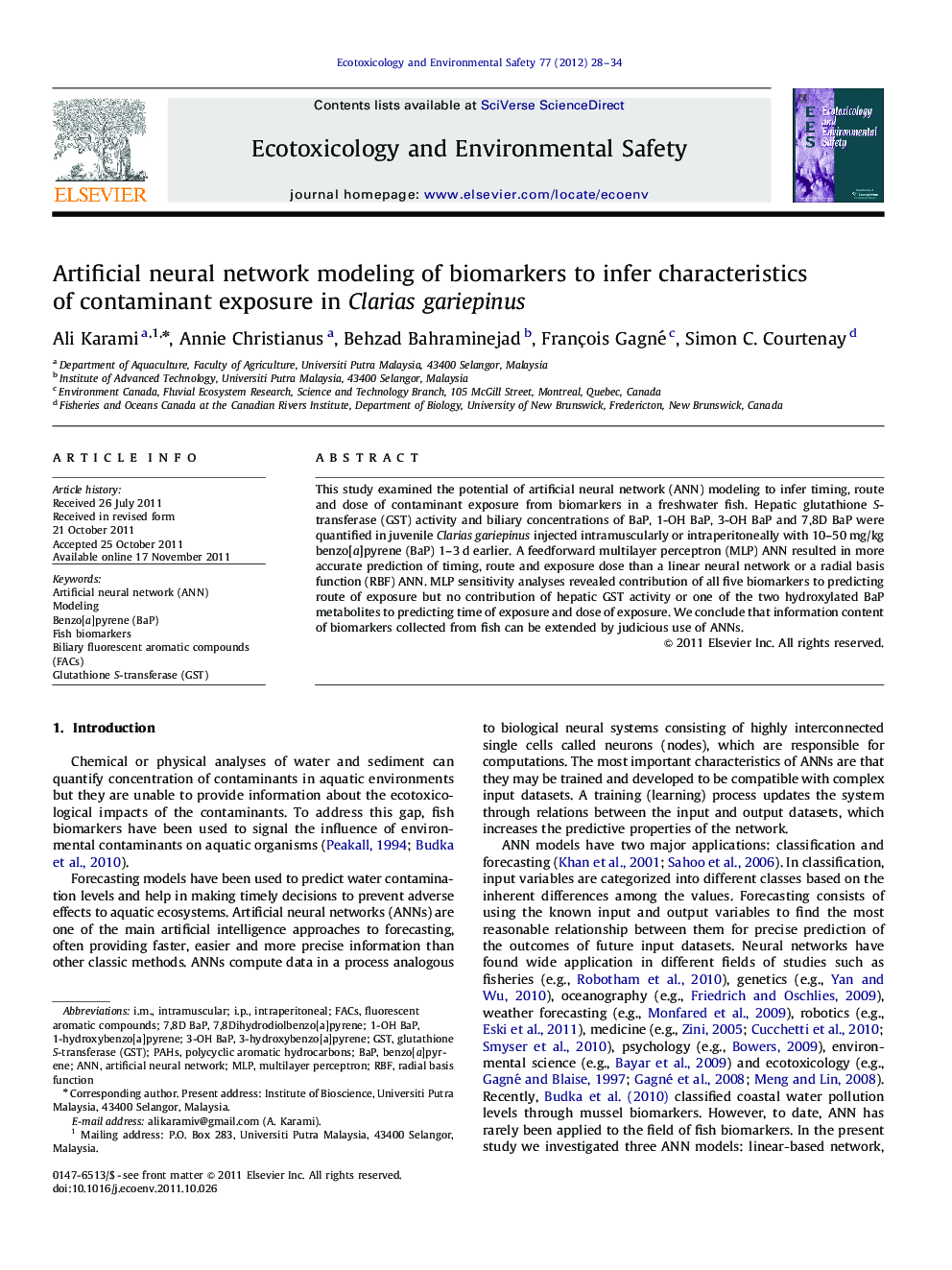| کد مقاله | کد نشریه | سال انتشار | مقاله انگلیسی | نسخه تمام متن |
|---|---|---|---|---|
| 4420866 | 1618986 | 2012 | 7 صفحه PDF | دانلود رایگان |

This study examined the potential of artificial neural network (ANN) modeling to infer timing, route and dose of contaminant exposure from biomarkers in a freshwater fish. Hepatic glutathione S-transferase (GST) activity and biliary concentrations of BaP, 1-OH BaP, 3-OH BaP and 7,8D BaP were quantified in juvenile Clarias gariepinus injected intramuscularly or intraperitoneally with 10–50 mg/kg benzo[a]pyrene (BaP) 1–3 d earlier. A feedforward multilayer perceptron (MLP) ANN resulted in more accurate prediction of timing, route and exposure dose than a linear neural network or a radial basis function (RBF) ANN. MLP sensitivity analyses revealed contribution of all five biomarkers to predicting route of exposure but no contribution of hepatic GST activity or one of the two hydroxylated BaP metabolites to predicting time of exposure and dose of exposure. We conclude that information content of biomarkers collected from fish can be extended by judicious use of ANNs.
► First attempt to apply ANNs to the study of the behavior of environmental contaminants through fish biomarkers.
► Best performance by feed-forward multilayer perceptron (MLP) ANN.
► Good prediction of how, when and at what dose African catfish were exposed to BaP.
► Most predictive information conveyed by biliary 7,8D BaP concentration.
► Hepatic GST activity and biliary FACs all needed to predict exposure method.
Journal: Ecotoxicology and Environmental Safety - Volume 77, 1 March 2012, Pages 28–34